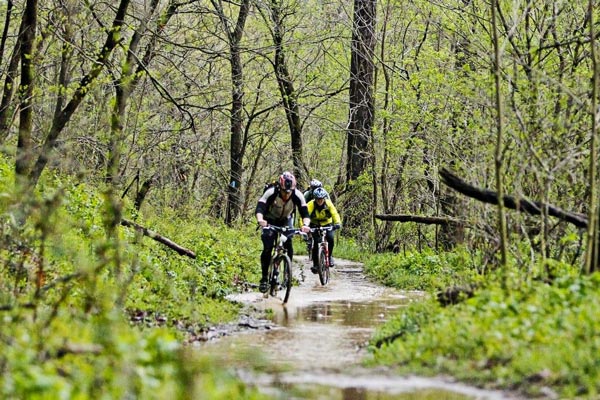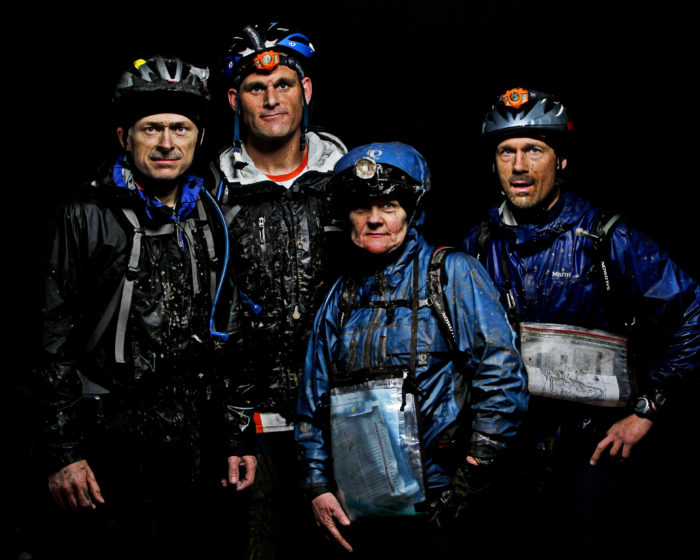11 Tips for Camping in the Rain
Camping in the rain can be unpleasant, but it doesn't have to be dangerous or miserable if you have the right gear and the right know-how. In fact, if you go into your camping trip prepared for rain, you can even enjoy watching a thunderstorm roll through or listening to the sound of rain beating against your rain fly. Here are eleven things you can do to prepare for rain.

1. WATCH THE WEATHER FORECAST AND WATCH THE ENVIRONMENT.
Hopefully it's obvious to you to do this, but just in case it's not: You should definitely be watching the weather forecast for the area where you'll be camping in the days prior to your departure. Check back frequently, because the forecast might have changed since the last time you looked. Changes are especially common with mountain areas, where the weather is often unpredictable.
However, even if the forecast calls for completely dry days, you should still take rain gear with you. While you're hiking or camping, you might notice sudden winds picking up, or an eerie stillness. If you have your dog with you, he might begin behaving as if a storm is coming. If any of these things occur, you should prepare yourself for a possible storm.
2. PRIORITY #1 WHEN CAMPING IN THE RAIN: PLASTIC BAGS, AND LOTS OF THEM.
Big black garbage bags and air-tight Ziploc-style bags are not hard to pack and they are not expensive. If you get caught in the rain, they'll be life-savers. The big black garbage bags are for keeping your pack dry. They can also be used to store wet gear, such as soaking shoes or drenched clothes, which prevents these items from getting everything else wet. A third use for the big black garbage bags is firewood. Before a storm comes up, you can stick dry firewood inside the bag. After the storm is over, you'll still have a way to easily make a fire. The Ziploc-style bags are for keeping everything else dry. Your fire-starting equipment, for example, should be stored in something that cannot get wet. Food, medicine, and other important items can also be kept inside sealed Ziploc bags in case of rain.
3. THERE'S NO PLACE BETTER THAN THE MIDDLE OF THE WOODS FOR THE NEW YORK TIMES.
Another cheap piece of "gear" you can bring with you that is especially useful in wet weather is newspaper. Dry newspaper can be placed inside your wet shoes to speed up the drying process; the newspaper will help suck out the moisture. Newspaper also works well for getting a fire started if you're having trouble finding dry kindling.
4. KEEP YOUR TENT HIGH AND DRY WHEN CAMPING IN THE RAIN.
When you set up your tent, one of the worst choices you can make is to place it in a low lying area, such as at the bottom of a slope. It can be tempting to set up your tent in a place like that, because it's often clear and relatively flat. Even if it's only a small slope, don't give way to that temptation. Instead, place your tent on a spot that's at the top of that small slope, a place where water is unlikely to collect.
5. PUT A HEAVY-DUTY TARP UNDERNEATH YOUR TENT.
When camping in the rain, tents can flood, they often do so not from above but from below. One way to prevent that from happening is to place a heavy-duty tarp under your tent. It is of the utmost importance that no part of the tarp extends out from underneath your tent. If a piece of tarp sticks out from underneath the tent, the rain will strike the tarp and roll underneath the tent, where the tent floor is likely to soak it right up. Fold any excess tarp under the tent so that you cannot see any of the tarp.
6. LINE THE INSIDE OF YOUR TENT.
Even with a tarp underneath your tent, moisture is still likely to come through if the rain is heavy enough and lasts long enough. Solve this problem by adding an extra layer of lining to the inside of your tent. Use the thick plastic sheeting that construction workers use, cutting a piece of it that's about six inches wider than the diameter of your tent. Placing this inside your tent will keep any moisture from seeping through and getting on your gear.
7. USE ANOTHER TARP ABOVE YOUR TENT.
A big tarp set up at an angle above your tent is a good way to keep your tent extra-dry, especially if you plan to stay camping in the same spot for several days instead of a single night. The overhanging tarp gives you a place to hang an outside clothesline for wet gear, gives you a "front porch" where you can take off your wet shoes and clothes without getting the inside of your tent wet and mucky, and, depending on the size of the tarp, can even give you a cooking area that's protected from the rain.
8. DON'T BRING COTTON CLOTHING.
Cotton has a way of getting damp and never drying even when it's not raining -- all it takes is humidity. When it is raining, cotton clothes will be even worse. Therefore, bring lightweight clothing, especially nylon material or other synthetics that are designed to wick moisture away.
9. HAVE A RAIN JACKET AND RAIN PANTS READY.
There's no quicker way to start feeling miserable and sorry for yourself when you're camping than getting your clothes soaked through-and-through. You can avoid this fate if you travel with a quality rain jacket and quality rain pants. As soon as you notice the storm coming on, stop what you're doing and pull on your rain gear. You'll find that the difference between getting soaked and staying dry is night-and-day.
10. SPEAKING OF WATERPROOFS, BRING WATERPROOF SHOES.
Wet feet are another way to quickly feel miserable out on the trail. Although waterproof shoes and waterproof boots can be expensive, if you've ever hiked with waterlogged feet, you'll understand that the extra expense is definitely worth it if you plan to intentionalyl camp in the rain.
11. ENJOY THE RAIN.
If you follow all of the tips above, then there's a good chance you'll be relatively dry and comfortable during the storm. That means you can allow yourself to build a campfire in the rain, relax and enjoy the rhythmic pattern of the rain against your tarp or your tent fly. Storms can be beautiful, so just sit back and watch as it rolls through your camping area.